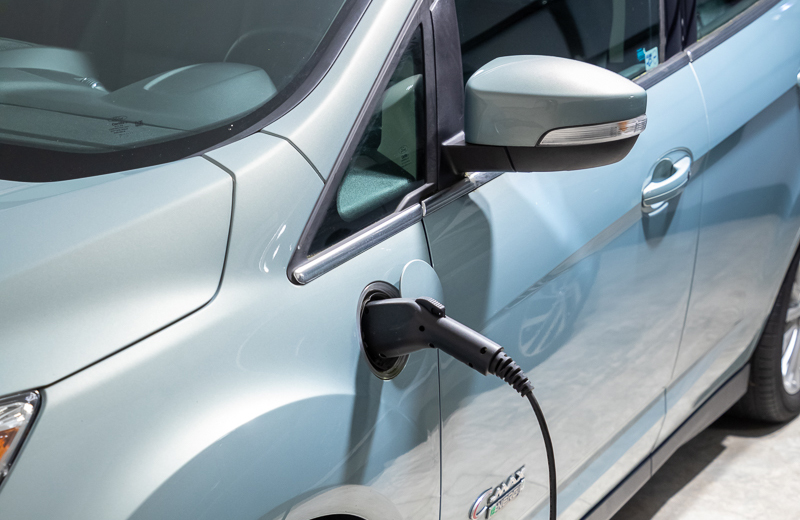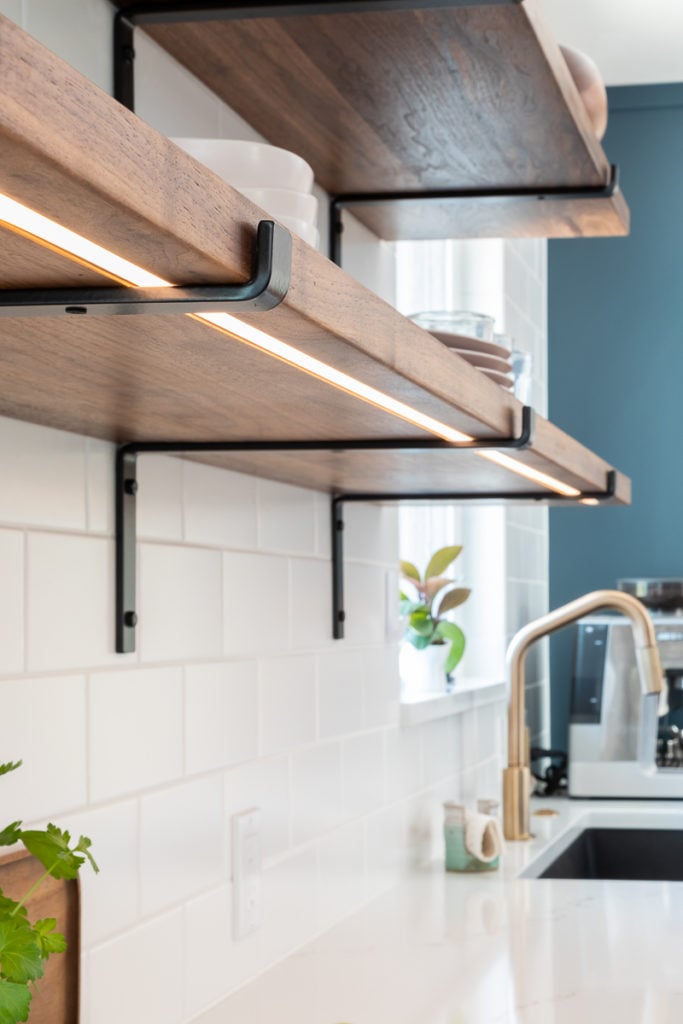Every year citizens of the world work harder to reduce greenhouse gas emissions and curb climate change, including within the construction industry. According to Architecture 2030, “the built environment generates 40% of annual global CO2 emissions.” This presents a huge opportunity for us to build better, both commercially and residentially. The choices you make during your home remodel or new build matter. Sure, it’s dent in a much larger bucket, but wouldn’t you rather be a part of the solution? Plus, homes with eco-friendly features often sell faster and for more money. Not to mention many of the eco-friendly features below can save you money over the long-term.
When it comes to a sustainable home, these are the must-have eco-friendly features you’ll want to invest in during the year ahead. Some are the gold standard; others have technology that far outperforms their predecessor.
- High-efficiency water heaters
- High-performance insulation
- Smart thermostats
- Energy Star & WaterSense certifications
- EV charging
Explore each of these eco-friendly features below, and consider adding them into your next home improvement project or when building a home.
High-efficiency Waters Heaters
Just about every homeowner will need to replace a water heater at some point in their lives. Whether it’s a preventative step or an emergency replacement, it’s important to consider the type of heater you choose to replace your existing one with. After all, heaters can last a decade or two. The decision you make now can impact your home’s performance and salability in the years to come. There’s a few water heaters that top the list: tankless and heat pump.
The benefits of tankless water heaters are many. These on-demand units heat water only when you need it, as opposed to a traditional storage-tank water heater which heats the water it’s holding continuously. While newer storage-tank water heaters rarely run out of warm water, and can be powered by electricity, they are generally less efficient. Water tanks also leave room for the possibility of a large, and costly, water leak. A tankless water heater on the other hand, uses a series of super-heated coils to quickly heat water as it passed through the unit. Essentially you have an endless supply of hot water from a water heater that’s less than half the size of a traditional tank water heater. Since storage if often a prized possession, replacing a water heater with a tankless version will free up some closet space for additional storage. Plus, a tankless unit will likely last longer and come with a longer manufacturer warranty.
Tankless water heaters can be powered by gas or electricity, though the latter is recommended if you are looking to electrify your home in the future or already have solar panels. Tankless heaters do generally cost slightly more than a tank heater, but the gap has been quickly closing in recent years. Local or federal tax incentives may be available, which would make the price discrepancy negligible.
Alternatively, heat pump water heaters work like a refrigerator in reverse. They pull existing heat from the air and transfer in to the water instead of creating the heat. This process is extremely efficient—even more so than a tankless water heater. Some of the benefits of a tankless unit are lost though. Heat pump water heaters do require a tank, work more efficiently in a heated space and are not instant. They may not be a good fit for every household, so your plumber can help you decide which high-efficiency water heater makes the most sense for your space and needs.
High-Performance Insulation
The combination of high R-value insulation and great air sealing is one of the best ways you can make your home more energy-efficient. An insulating material’s ability to resist heat flowing through it is measured in terms of its thermal resistance, known as R-value. The higher the R-value, the greater the insulating effectiveness. Insulation R-values generally range from R-13 to R-49. Recommended R-values will differ depending on where in the country you live and the part of your home you’re insulating (exterior walls, interior wall, roof, crawlspace, etc.). A reputable insulation company or contractor can advise you on the proper combination of R-Values that would suit your home.
High-performance insulation goes beyond minimum building code requirements and offers extra insulation that will help your home regulate temperature all year round. Using high-performance insulation when building a new house is easy. The same goes for building a home addition, basement remodel or other major home renovation. Insulation retrofits can often be easily added to an existing remodeling project bid. You just have to ask your contractor what insulation upgrades are available and what is recommended for your particular climate.
Here in the Northwest, we recommend rigid foam board for added insulation on exterior walls and below-grade basements. This thin foam is another step of air sealing and insulation, in addition to the plush batts you typically find inside the wall. Instead of the lowest R-13 insulation for exterior walls, spend a fraction more to reach R-21 or R-23. For a smaller project, we’re talking just a few hundred dollars more for a much more insulated home. Insulation is not an area to pinch pennies if you want to avoid heat loss in the winter or conditioned air loss in the summer.
High-performance insulation makes a big difference in a home’s energy efficiency, because even the most high-performance HVAC systems mean nothing without good insulation and air sealing. Just remember, a well-insulated home also needs exceptional airflow.
Smart Thermostats

Smart thermostats also have the ability to connect to your smartphone or home automation system so you can get a picture of your energy use and savings over time.
How much energy do smart thermostats save? On average, savings are approximately 8% of heating and cooling bills (source: Energy Star), which can really add up year-over-year. For just a few hundred dollars, you can buy a smart thermostat that will pay for itself before you even consider moving! If you live in a climate where temperature changes significantly throughout the year, a smart thermostat will help you realize even greater energy savings.
There’s nothing worse than leaving for a winter vacation and forgetting to lower your thermostat. Avoid heating your home unnecessarily, and the cost that comes with it, by installing a smart thermostat. Smart thermostats use programmed artificial intelligence to learn your heating preferences and adjust the temperature throughout the day accordingly. They also notice when someone hasn’t walked by in a while, and can set your home’s temperature to “away” mode automatically. Avoid having to manually adjust your thermostat, and reap energy-savings at the same time.
Energy Star & WaterSense certifications
You don’t have to dig into the nitty gritty numbers when it comes to choosing better appliances and products. Just look for the ENERGY STAR, WaterSense or other sustainability certification labels. These certifications signify products that have been thoroughly vetted as better for the environment.


ENERGY STAR certified products meet strict energy-efficiency specifications set by the U.S. Environmental Protection Agency (EPA), and have been tested to prove they use significantly less energy than their not-rated counterparts. Look for the ENERGYGUIDE label (most often a bright yellow tag), which lists some key energy-saving features, shows you the estimated yearly energy use of the appliance and what that might cost. If you’re shopping in-store, these yellow tags work as a great comparison tool. If you’re shopping online, most retailers offer a digital version or have the ratings listed in the product description.
Definitely purchase appliances that are ENERGY STAR certified, but also look for the ENERGY STAR certification on other household items like lightbulbs, windows and even TVs!
WaterSense is another U.S. EPA certification to keep on your radar. WaterSense certified products meet federal water-saving specifications, using at least 20 percent less water, saving energy, and performing as well as or better than regular models. Reducing water usage helps avoid droughts and reduces wastewater infrastructure costs. It also lowers your personal water costs. Look for the WaterSense logo on everything water-related, including: showerheads, faucets, toilets, and even landscaping irrigation.
EV Charging
Even if you don’t own a electric vehicle (EV) yet, you may in the future! EVs have truly taken off in the past year, with most major auto manufacturers committed to phasing out gas-powered vehicles. The transition to EVs isn’t showing any signs of slowing so it’s becoming more and more likely that you, or the person you sell your home to, will drive an EV. Charging for an EV needs to be wired directly into your domestic electricity supply, so the next time you have an electrician out to your home consider if now is the time to add that plug to the garage or driveway.
Most EV carmakers and charging equipment manufacturers around the globe have a standardized plug design, called a J1772 connector. While cars can charge with a standard 120 volt plug (aka Level 1), a 240 volt wall-mounted charger (aka Level 2) is very desirable. With a Level 2 plug, you can charge your EV much faster at home.
If you’ve already made the investment in solar panels, it’s likely an EV is next on your eco-friendly home list. Charging a car could be free if your solar array produces more than enough power for your home usage. An electrician can wire for a future charger, giving you or the next homeowner the option of easily installing an EV charger. EV hookups are becoming standard for new home construction, and we expect more people will be looking for them 2023 and beyond.






